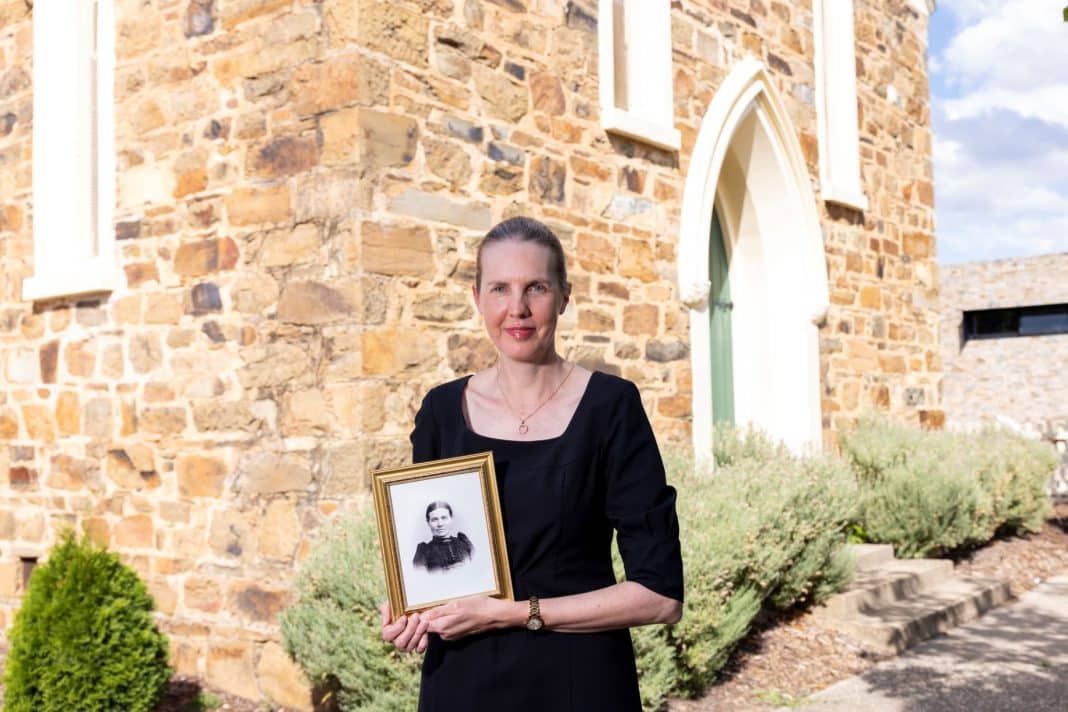If the name Rolfe sounds familiar to you, you’re most likely a Canberran.
The Rolfe brothers, Anthony and William, were among the first European settlers on Ngunnawal country and championed for the area to become the nation’s capital.
Canberra resident Sally Bond is a direct descendant of the Rolfes and said she’s proud to be part of the pioneering family.
The local lineage begins with brothers Anthony and William, both emigrants from England in the 1800s.
William Rolfe was convicted of poaching a hare in Norfolk, received a life sentence and was transported to Australia in 1836 where he was assigned to the Queanbeyan district.
William received a ticket of leave in 1844 and a full pardon for his crime in December 1849.
He convinced his brother Anthony to leave England and make a new home in Australia.
In February 1849, the brothers were reunited after 13 years and together they secured land, became farmers, and, between them, had 12 children and 87 grandchildren.
Sally is particularly proud of the Rolfes’ “love” of the Canberra region and their fight for it to become the national capital; although, she said, “it came to their detriment, because all their land got compulsorily acquired”.
Sally has records of William Webber writing a letter to then Prime Minister, Mr Chris Watson (1904), promoting the Canberra region as a great place to establish the capital.
In the letter, Webber firmly believes he and Edmund Rolfe to be the first persons to “move for the selection of Canberra as the Federal City”.
Many descendants of William and Anthony Rolfe continue to live in Canberra today.
“There’s lots of descendants of the Rolfe family in Canberra and I have met quite a few through the different branches,” Sally said.
“Obviously, there’s the Rolfe Motor Group and they all descend from those early pioneers.”
One of Canberra’s original homesteads in Ngunnawal, Tea Gardens Homestead, was established by the Rolfe family, and it still stands today (although heavily renovated).
Gold Creek Homestead was another pillar of the Rolfe family property portfolio, which was eventually compulsorily acquired by the Commonwealth government of the time.
“Both Gold Creek [homestead] and Tea Gardens were very big on having – normally it was in the woolshed – dances and things,” Sally said.
“Some of these stories are quite interesting because it talks about how dancing continued till midnight, and they had supper, and then dancing continued with vigour until daylight. They were real all-night affairs. But mainly it was for benefits, like the church building fund, or at the school. So, it was always some community benefit.”

Queanbeyan Museum showcases Rolfe family history
Largely thanks to Sally’s extensive family albums, the Queanbeyan Museum will showcase an exhibition of the Rolfes in Canberra for Heritage Week.
Sally’s interest in her family history was sparked by one of her aunties, who shared many stories about their heritage.
In her quest for knowledge, Sally stumbled upon a treasure trove of digitised newspapers, and most of the things her aunty shared were found to be true.
She’s gifted many photos and records of the Rolfe family to the Museum, in the hopes of giving Canberra a glimpse into its early colonial history.
The Museum will follow the story of the two original Rolfe brothers on their journey to the colony of Canberra, and their settlement on colonised Ngunnawal country.
William and Anthony Rolfe were staunch Catholics and, at the time, faced persecution in England.
Once they arrived in Australia, they were instrumental in the establishment of St Gregory’s Catholic Church in Queanbeyan.
The family would walk from Springbank to the church for mass, before Lake Burley Griffin was filled, as that was their local church.
What is now known as Springbank Island was an early 1900s homestead where the Rolfes worked on the land.

Springbank homestead in the early 1900s with Black Mountain in the background
Source: https://www.abc.net.au/news/2020-07-16/canberra-springbank-lake-burley-griffin-history/12458040
Anthony and William are buried side by side in the Catholic section of the Queanbeyan Riverside Cemetery.
“There’s a lot of volunteers at the Museum who really work tirelessly. I’m only helping on this project, but there are people who go there every week that are really passionate about preserving the history of this area.
“I think that people probably criticise Canberra for not having much history, but … there is a lot of early European history here,” she says.
Queanbeyan Museum will hold an open day on 16 April; open weekends 1-4pm; find @queanbeyanmuseum on Facebook.
Canberra Daily is keen to hear from you about a story idea in the Canberra and surrounding region. Click here to submit a news tip.



